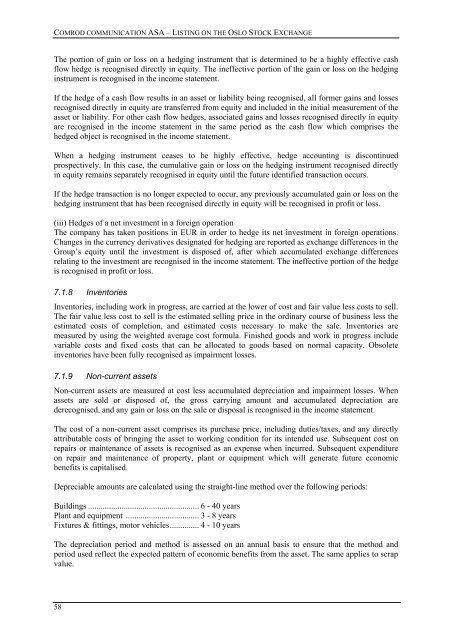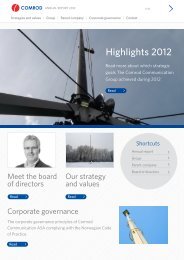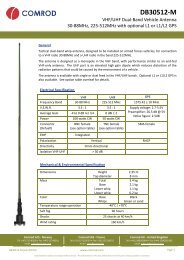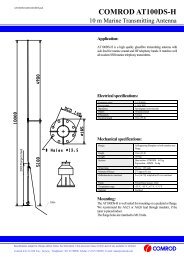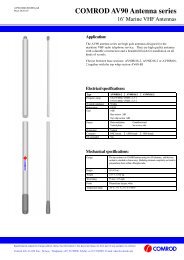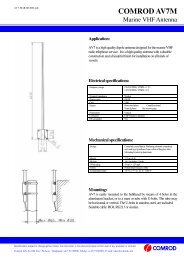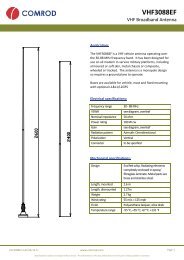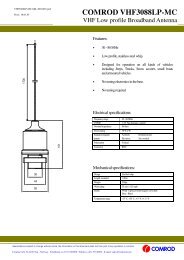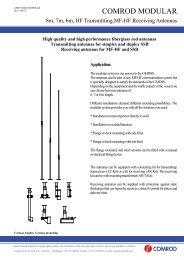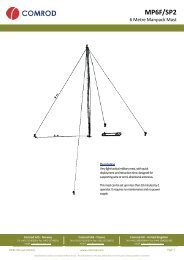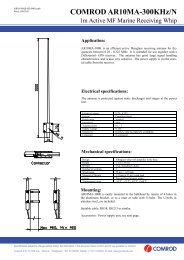English version - Hexagon Composites ASA
English version - Hexagon Composites ASA
English version - Hexagon Composites ASA
Create successful ePaper yourself
Turn your PDF publications into a flip-book with our unique Google optimized e-Paper software.
COMROD COMMUNICATION <strong>ASA</strong> – LISTING ON THE OSLO STOCK EXCHANGE<br />
The portion of gain or loss on a hedging instrument that is determined to be a highly effective cash<br />
flow hedge is recognised directly in equity. The ineffective portion of the gain or loss on the hedging<br />
instrument is recognised in the income statement.<br />
If the hedge of a cash flow results in an asset or liability being recognised, all former gains and losses<br />
recognised directly in equity are transferred from equity and included in the initial measurement of the<br />
asset or liability. For other cash flow hedges, associated gains and losses recognised directly in equity<br />
are recognised in the income statement in the same period as the cash flow which comprises the<br />
hedged object is recognised in the income statement.<br />
When a hedging instrument ceases to be highly effective, hedge accounting is discontinued<br />
prospectively. In this case, the cumulative gain or loss on the hedging instrument recognised directly<br />
in equity remains separately recognised in equity until the future identified transaction occurs.<br />
If the hedge transaction is no longer expected to occur, any previously accumulated gain or loss on the<br />
hedging instrument that has been recognised directly in equity will be recognised in profit or loss.<br />
(iii) Hedges of a net investment in a foreign operation<br />
The company has taken positions in EUR in order to hedge its net investment in foreign operations.<br />
Changes in the currency derivatives designated for hedging are reported as exchange differences in the<br />
Group’s equity until the investment is disposed of, after which accumulated exchange differences<br />
relating to the investment are recognised in the income statement. The ineffective portion of the hedge<br />
is recognised in profit or loss.<br />
7.1.8 Inventories<br />
Inventories, including work in progress, are carried at the lower of cost and fair value less costs to sell.<br />
The fair value less cost to sell is the estimated selling price in the ordinary course of business less the<br />
estimated costs of completion, and estimated costs necessary to make the sale. Inventories are<br />
measured by using the weighted average cost formula. Finished goods and work in progress include<br />
variable costs and fixed costs that can be allocated to goods based on normal capacity. Obsolete<br />
inventories have been fully recognised as impairment losses.<br />
7.1.9 Non-current assets<br />
Non-current assets are measured at cost less accumulated depreciation and impairment losses. When<br />
assets are sold or disposed of, the gross carrying amount and accumulated depreciation are<br />
derecognised, and any gain or loss on the sale or disposal is recognised in the income statement.<br />
The cost of a non-current asset comprises its purchase price, including duties/taxes, and any directly<br />
attributable costs of bringing the asset to working condition for its intended use. Subsequent cost on<br />
repairs or maintenance of assets is recognised as an expense when incurred. Subsequent expenditure<br />
on repair and maintenance of property, plant or equipment which will generate future economic<br />
benefits is capitalised.<br />
Depreciable amounts are calculated using the straight-line method over the following periods:<br />
Buildings ..................................................... 6 - 40 years<br />
Plant and equipment ................................... 3 - 8 years<br />
Fixtures & fittings, motor vehicles.............. 4 - 10 years<br />
The depreciation period and method is assessed on an annual basis to ensure that the method and<br />
period used reflect the expected pattern of economic benefits from the asset. The same applies to scrap<br />
value.<br />
58


